Can I Just Report a Rich Snippet of Total Reviews to Google

Desire to learn how rich snippets tin assistance y'all become more than traffic from Google?
You're in the correct place!
In this guide, yous'll find out:
- how rich snippets volition help your website stand out in today's crowded search results,
- how to get them,
- and how that actress search visibility volition atomic number 82 to extra clicks (and more than potential customers)
And for the information geeks, we've also got a instance written report on one specially constructive rich snippet format that nosotros discovered is MASSIVELY underused in 2021.
Spoiler alert: iv out of v websites with this type of content may be able to go an INSTANT bump in their search traffic.
Here's a full listing of what'southward inside:
Ready to swoop in?
Before we get to the cool stuff, allow'south get-go with a definition.
What are rich snippets?
Rich snippets are enhanced search results which provide additional information to searchers on the contents of a page. Google and other search engines utilize structured data, contained within the HTML, or Javascript of a webpage, to form these snippets.
How rich snippets tin increase your traffic from Google
In short: visibility.
Considering these days, a typical search result can look like this:
Which ways that if your search outcome looks like this:

It's going to be super hard to grab a searcher's attention. You're going to go lost in the crowd.
Simply add Production structured data and your search result could await like this:

Which is going to give you lot a fighting chance.
Or add together FAQ structured information and it could look like this:

Which could give your outcome 3x more real estate on the page…

The expert news:
It'due south super simple to exercise.
The bad news:
Google won't always display your rich snippets. But more on that later on.
How to qualify for rich snippets
For your webpage to be eligible for rich snippets, you'll need to add a specific type of structured markup to your HTML called "schema".
Then what's schema?
Well, search engines are smart. But they're not equally smart equally you.
Take a expect at the following screenshot:
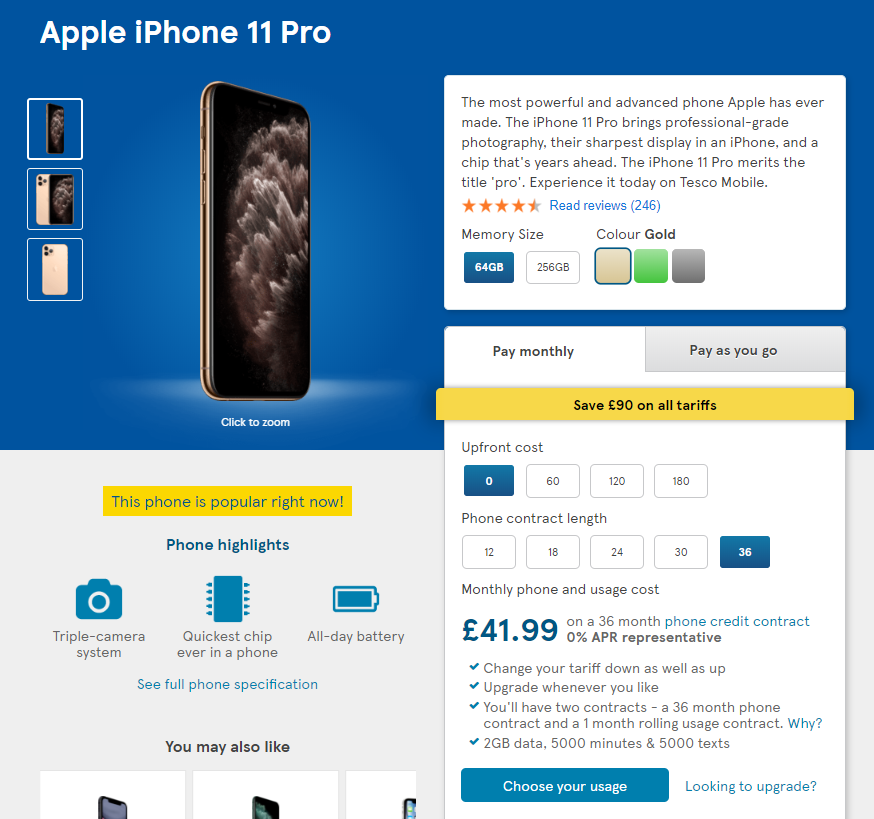
In a few seconds you'll figure out that:
- this is an iPhone 11 Pro,
- it's got iv.5(ish) stars,
- information technology's going to cost y'all £41.99 a month
A search engine on the other paw…
…well, it might make an educated guess.
But unless you spoon feed it the information, information technology'southward not going to be 100% sure. And it'southward definitely not going to be sure enough to display that additional information in a rich snippet.
Schema is the spoon with which you feed it this information.
You tin can implement schema in 2 means. Allow'southward start with the simplest.
1. Adding schema with microdata
For a basic product we might accept the following HTML:
<div> <h1>iPhone eleven Pro</h1> <img src="iphone11pro.jpg" /> <p>This is an iPhone 11 pro.</p> <p>Toll: £41.99</p> <p>Availability: in stock</p> </div>
And that'due south actually reasonably well structured. But it'due south even so not going to exist 100% crystal clear to a search engine.
So nosotros can add together schema microdata to remove any doubtfulness.
Here's how that would expect for the example above.
<div itemscope itemtype="http://schema.org/Product"> <h1 itemprop="proper name">iPhone xi Pro</h1> <img src="iphone11pro.jpg" itemprop="prototype" /> <p itemprop="clarification">This is an iPhone 11 pro.</p> <div itemprop="offers" itemscope itemtype="http://schema.org/Offer"> <p>Price: <bridge itemprop="priceCurrency" content="GBP">£</span> <bridge itemprop="price">41.99</span></p> <link itemprop="availability" href="http://schema.org/InStock" /> <p>Availability: in stock</p> </div> </div>
Breaking that down, we've got our parent entity, a production:
<div itemscope itemtype="http://schema.org/Product">
We have its name, paradigm and description:
<h1 itemprop="name">iPhone 11 Pro</h1> <img src="iphone11pro.jpg" itemprop="prototype" /> <p itemprop="description">This is an iPhone 11 pro.</p>
We and then accept our offering, which is nested inside the parent product:
<div itemprop="offers" itemscope itemtype="http://schema.org/Offer">
Which includes currency, price, and availability.
<p>Price: <span itemprop="priceCurrency" content="GBP">£</span> <span itemprop="price">41.99</bridge></p> <link itemprop="availability" href="http://schema.org/InStock" /> <p>Availability: in stock</p>
We then close off the offering.
</div>
And finally, close off the parent product entity.
</div>
We can then validate our code using the "Lawmaking Snippet" pick in Google's Rich Results Examination tool.
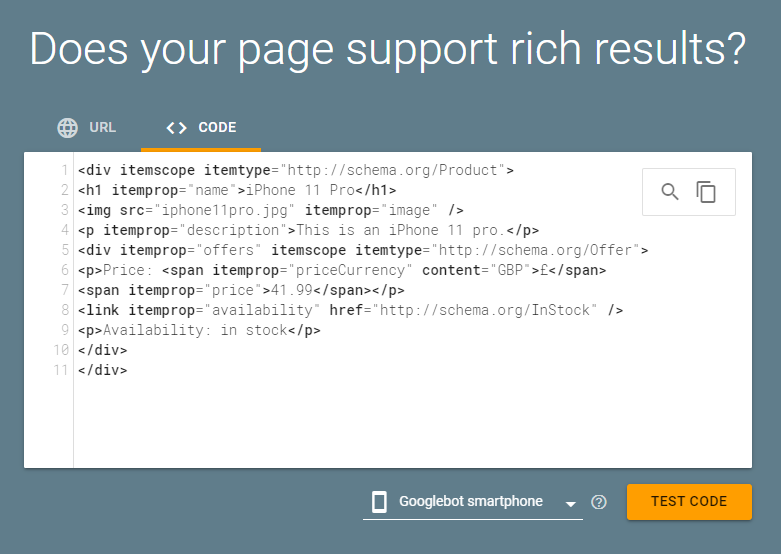
And we can encounter that Google has correctly interpreted the lawmaking:
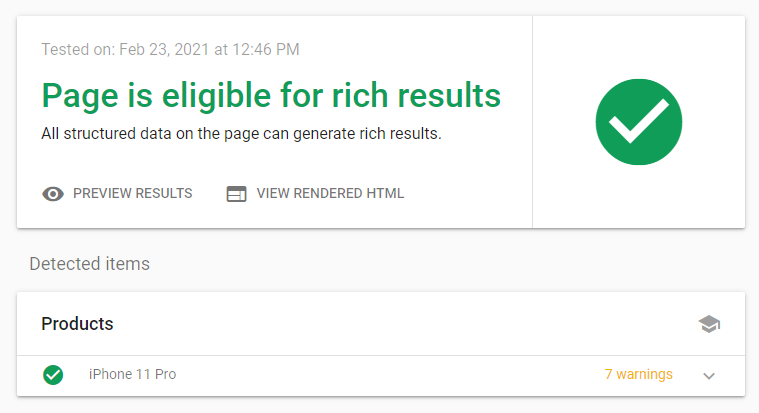
Which means nosotros'll be eligible for a product rich snippet in search results, with price and stock condition shown.
2. Calculation schema with JSON-LD
JSON-LD stands for JavaScript Object Note for Linked Information.
Which sounds intimidating…
But for our purposes, all you need to know is that it's a way to include schema data in Javascript, rather than in microdata added to your HTML tags.
(If you desire to know more almost how it works check out this guide from Moz)
Instead of the HTML above, we could add the following script to our page:
<script type="application/ld+json"> { "@context": "https://schema.org/", "@blazon": "Product", "proper noun": "iPhone 11 Pro", "epitome": "iphone11pro.jpg", "description": "This is an iPhone xi pro.", "offers": { "@type": "Offer", "url": "", "priceCurrency": "GBP", "price": "41.99", "availability": "https://schema.org/InStock" } } </script> And Google would translate information technology in the same way as our microdata example:

If you're not comfortable with Javascript, then you can utilize this free tool to generate JSON-LD schema.
Should y'all use Microdata or JSON-LD?
You can use either format to implement your schema. Both formats volition make your pages eligible for rich snippets.
And for the non-technical microdata is probably the easiest to empathize.
Only if you accept the option, then I'd recommend going for JSON-LD.
Why?
Because co-ordinate to Google's John Mueller, that'southward what they prefer.
"We currently prefer JSON-LD markup. I retrieve most of the new structured information that are kind of come up out for JSON-LD first. And then that'south what we adopt."
Will adding schema improve your rankings?
Google evaluates a TON of factors to decide where your page should rank.
But the mere presence of structured data (schema) is almost certainly not ane of them. It would be besides easy to manipulate.
In other words, if two pages already rank on folio i for a keyword, and:
- Page A has schema
- Folio B does non take schema
Folio A has no immediate reward over page B.
However…
Nosotros know that schema helps Google to understand what a page is about. And co-ordinate to this tweet from John Mueller, that "might make it easier to show where it'south relevant".
There's no generic ranking boost for SD usage. That's the same every bit far equally I remember. Yet, SD can brand it easier to understand what the page is most, which can get in easier to prove where it'due south relevant (improves targeting, maybe ranking for the right terms). (non new, imo)
— 🧀 John 🧀 (@JohnMu) April 2, 2018
Which is a bit cryptic.
Simply here'southward a way that statement could be interpreted.
- Page B is a product page, but also includes a large 2,000 word description of the product
- Google is unsure whether to show the page more frequently for transactional ("buy 10") or informational ("what is X") queries
- The addition of production schema gives Google clarity that transactional queries would be the best fit
And so while adding schema won't movement y'all from position 5 to position iv…
…it MAY assist Google show your page for more relevant queries.
Improved CTR may lead to improved rankings
Does Google use click-through rate (CTR) to directly influence rankings?
Depends on which commodity, or study, you read.
In the blue corner (it does) we accept:
- This experiment by Cesarino Morellato and Andrea Scarpetta
- And this one from Rand Fishkin
And in the ruddy corner (it doesn't) nosotros have:
- This report by Eric Enge
- This i from Bartosz Góralewicz
- Numerous statements from Google
This commodity by Dan Taylor does a skilful task of summing up the arguments.
My stance?
I'm on the fence. You could say I was in the purple corner.
Simply 1 things for sure:
More than clicks = more than eyeballs on your content = more potential links. And links DEFINITELY influence rankings.
And so even if CTR is not a directly ranking factor…
…an improved CTR is going to pb to many of the good things (like links) that volition improve your rankings.
To summarize:
- Schema markup won't straight influence rankings. There'southward no firsthand heave.
- But it may help Google understand which queries (or query types) to show your folio for.
- Adding schema makes your folio eligible for rich snippets.
- Rich snippets tin can boost your CTR, which may not influence rankings directly, but will help with other factors that can.
Or long story brusque:
Yep, adding schema can ameliorate your rankings. Probably non directly, simply definitely indirectly.
Which rich snippet format is right for you?
Then schema is the "how".
Your adjacent task is to figure out which type of rich snippet is right for y'all.
Considering there are LOTS of options!
The simplest way to interruption this down is by business blazon.
While this is not hard and fast, the following should requite yous a proficient indication of the type of rich snippet that volition be nearly effective for your website.
Note: I should also point out that this list is far from exhaustive. But I've focused in on the nigh common rich snippet formats.
Ecommerce sites
If you're running an Ecommerce store, you'll want production details (cost, stock status) and ideally review stars on your snippet.

Which means that "Product schema" is what you need to implement.
Easy peasy.
(the good news is that near Ecommerce systems are setup with this in place out the box; more on that later)
Review sites
Running a review site? You'll want your ratings for each article, and generally the name of the reviewer, to prove up on Google.

Then you might think that "Review schema" is what you need to add.
And it can exist…
But actually, if yous're reviewing a product, you can besides utilize Production schema (with "Review" as a section).
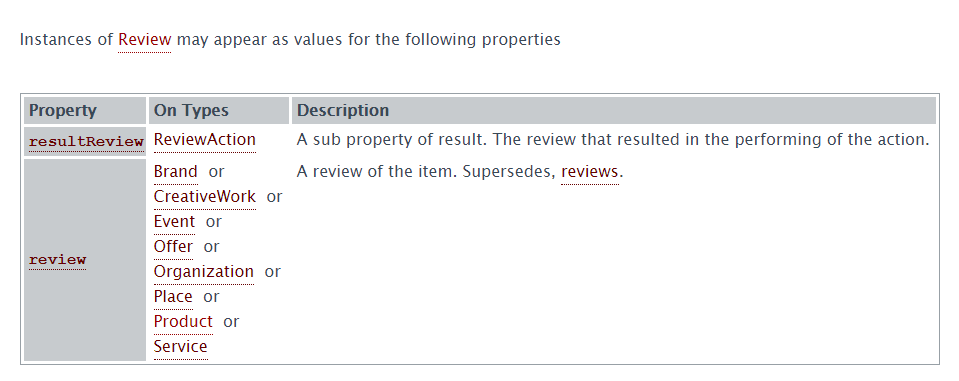
Which is exactly what TechRadar have done.

So which should you use?
Either. Your rich snippet will exist the same.
Only I'd exist leaning towards Product schema.
Why? Because that'due south what about of the big boys do.
On a Google search for "iPhone 11 pro review" five out of the viii organic results on the first page had schema in identify.
And all of them opted for Product schema.
Content sites
Full general content site?
You have a few options!
But for maximum visibility in the search results, I would recommend FAQ schema and HowTo schema.
FAQ schema will give you rich snippets like this:
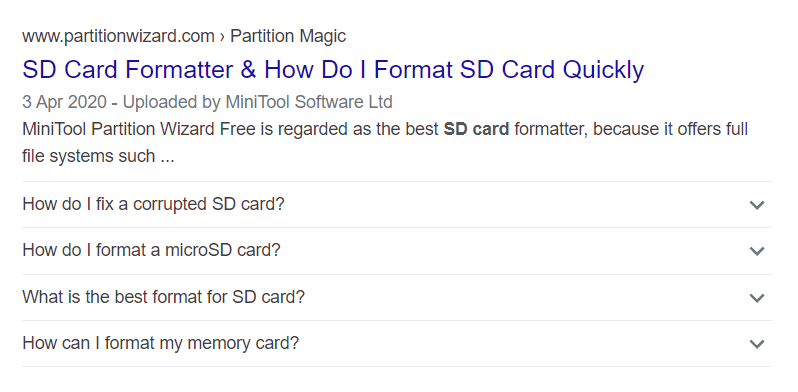
While HowTo schema will give y'all rich snippets like this (mobile):
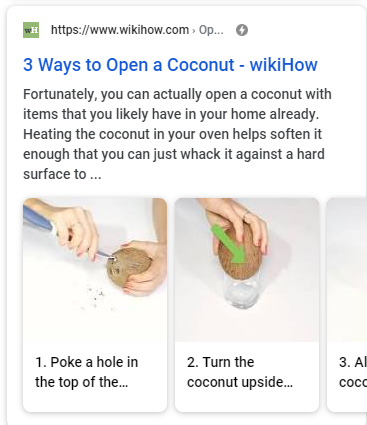
And this (desktop):
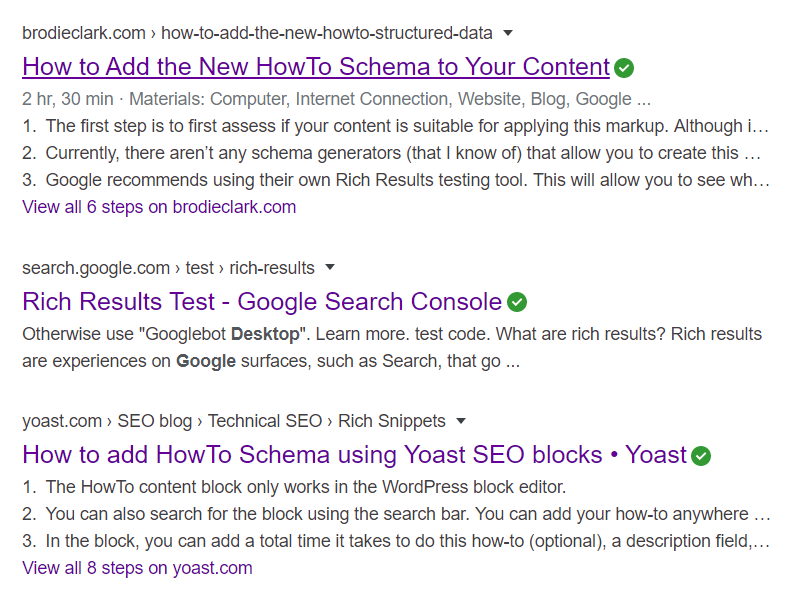
When should you use FAQ schema?
FAQ schema is a bit of a jack of all trades and can be implemented on a multifariousness of different types of content.
Just add together an FAQ section to your article or page, make sure y'all have the right schema in place, and you're gilt.
Most advisory articles will lend themselves to including an FAQ section. In fact, we'll give you an example right at the end of this guide.
Just you could besides try adding FAQs to a business service folio.
When should you utilise HowTo schema?
Any how-to articles which include steps present a perfect opportunity to add HowTo schema.
And they're probably the most attention grabbing of all rich snippet formats.
If you lot have content that fits, I'd highly recommend you effort them out.
But…
They might non work for you. Bank check out the case study in office 7 to find out why.
Running WordPress? Yoast makes calculation HowTo and FAQ schema a slice of cake
If you lot're running WordPress and using the default blocks editor, then information technology'southward super easy to add together the correct Schema for HowTos and FAQs.
This guide from Yoast shows how to practice it.
Recipe sites
Does your site feature recipes? There's a rich snippet for that.
And it looks awesome…

In the rich snippet above we tin can come across that, in addition to a picture and rating, Google has included total time and number of calories.
But even better than that…
Adding recipe schema makes a page eligible for the "Recipes" cake, which is displayed in a higher place the regular organic results:
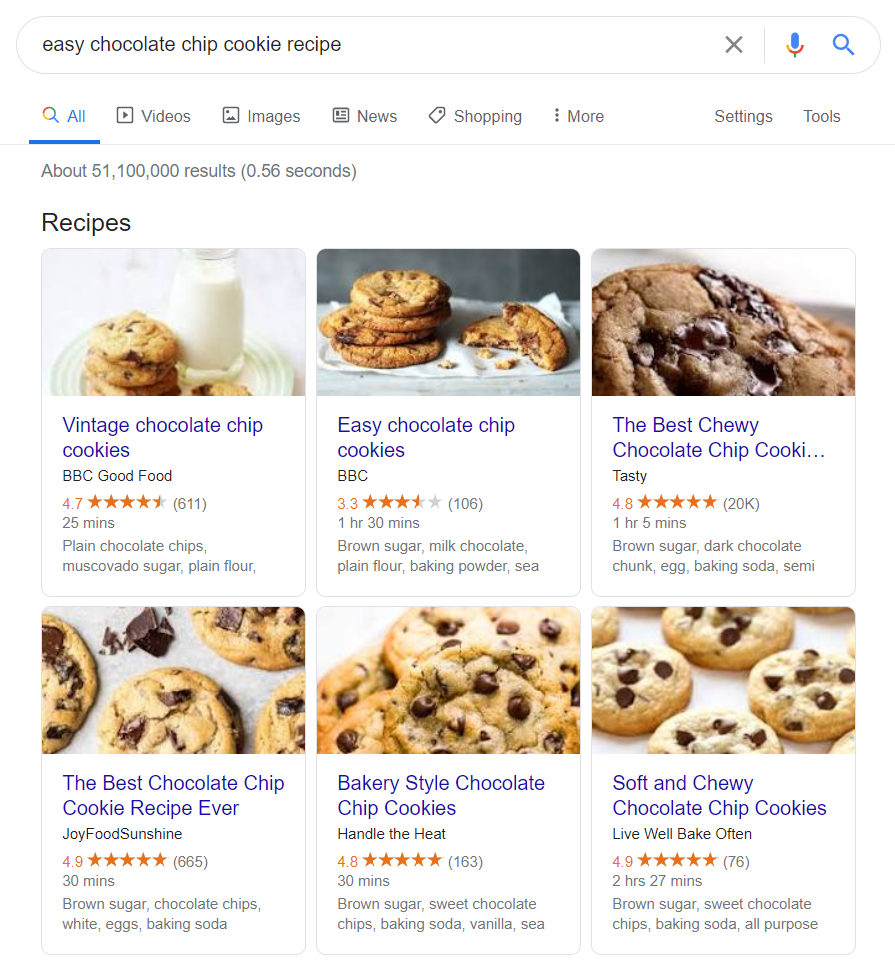
Here's Google's guide on how to do it.
Events
Got an event (or events) coming up? Add Event schema for rich snippets similar this:

We get dates and venues correct in the snippet.
And as an added bonus, those links are clickable. Clicking the first i takes me straight to the booking page for the Stade Pierre Mauroy.

So not only do we get increased visibility in search, we should up our conversion charge per unit besides.
Overnice!
Video rich snippets
Video embedded on your page? Add VideoObject schema and Google may show a video preview beside your listing in the SERPs.
Golf Channel include VideoObject schema on most of their pages. Which makes for some centre catching search results…

Find out how it's done here.
Pro tip: reverse engineer your competitor's rich snippets
Not sure which rich snippet format is right for y'all?
Scan through some search results in your niche and accept a look at what your competitors are doing.
And when you spot a rich snippet format you like…
…grab the URL and plug information technology into Google's Rich Results Exam tool.
If nosotros exercise that for one of the Golf Channel videos above, we tin see they have the VideoObject schema in identify.
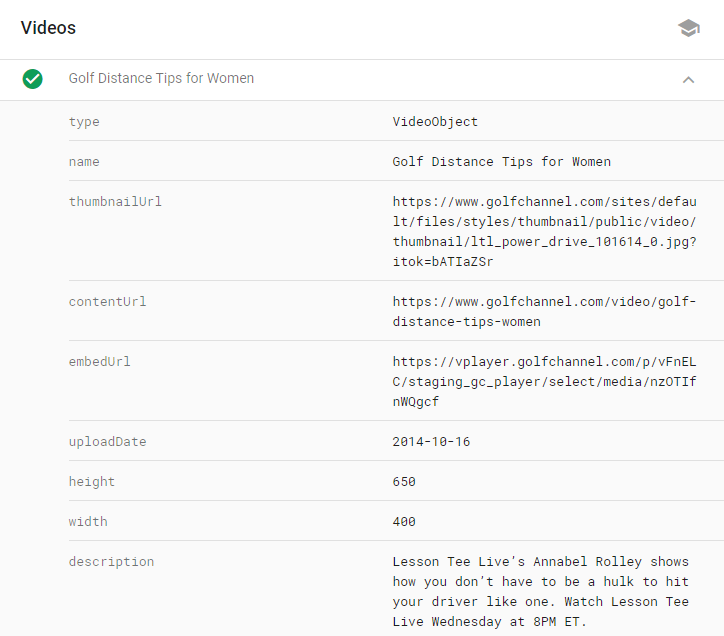
So now all nosotros need to practise is add together the same schema to our page and we have a shot at grabbing a similar rich snippet.
Picked your rich snippet format?
That'due south a quick overview of the about common rich snippet formats currently supported past Google.
But there are loads more….
…similar Q&A rich snippets, music, and flights.
Google won't bear witness a rich snippet for EVERY type of schema. But equally they're always tweaking their layouts, that'south not to say they won't add (or remove) more formats in the futurity.
Here's a handy list of all rich results currently supported by Google.
And this video from Search Engine Land discusses the deviation between Schema.org and Google'south use of structured information.
Finally, for completeness, here's a full list of schema types on schema.org.
Testing rich snippets and schema
Chosen the rich snippet format that's correct for you? Implemented the schema code on your website? It'due south time to exam.
There are ii main tools you can apply for testing:
- Google's "Structured Data Testing" tool
- Google's "Rich Results Test" tool
Hither's how (and when) to use them.
Note: In April 2021, the Structured Data Testing Tool will be migrated to a new domain. We'll update this post when the change happens, but for now you can go along to apply the tool at the current URL.
Use the Structured Information Testing Tool to validate ALL your schema
The structured data testing tool is non specifically designed for rich snippets. Information technology'southward a tool for validating ALL schema on a webpage.
You should employ it whenever you add any new schema (for rich snippets or otherwise) to make sure everything is validating correctly.
(or if you're not certain which schema is already installed on your site, you tin can apply the tool to cheque!)
Just go to the tool, enter a URL, and hitting "Run Examination".
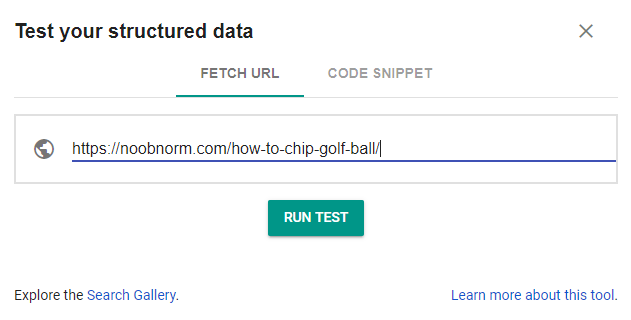
The tool volition show you which schema types were detected on the page, and notify you of any errors or warnings.
In the example below we can see that Google has detected both "Article" and "How To" schema.

And we can click on a schema type to view the data.
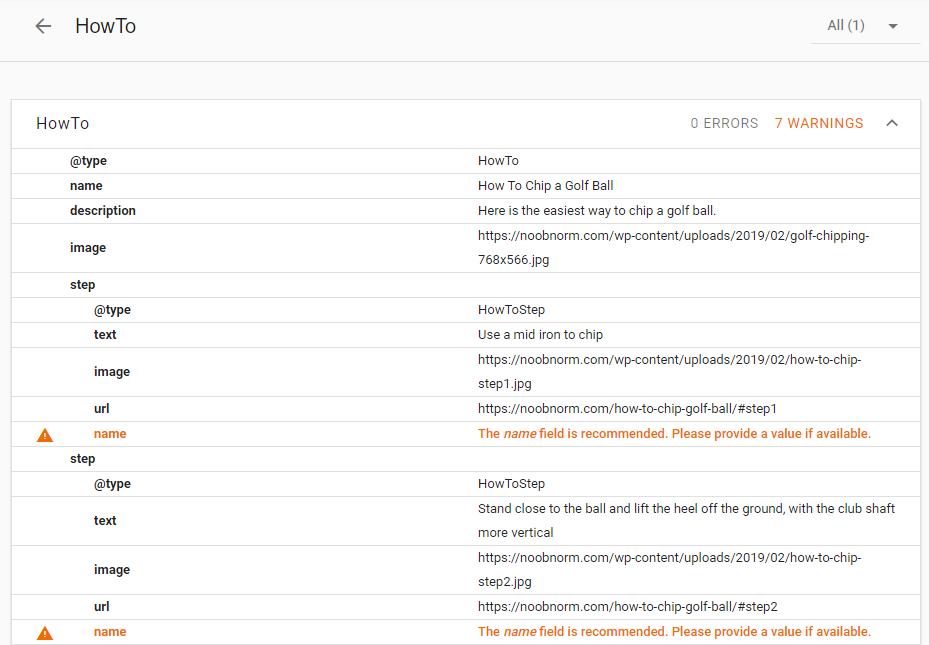
Yous'll demand to fix any errors.
Merely generally, warnings are safe to ignore. They won't stop your rich snippets from being displayed. Although, if you can ready them… and then fix them!
Once we're happy that everything is validating, we tin employ the rich results test tool.
Use the Rich Results Test Tool to preview your rich snippets
The structured information testing tool is super helpful.
But what information technology doesn't practise is let us preview how our snippet might look in search.
That'southward where the rich results test tool comes in!
Once more, we'll starting time by plugging in a URL.
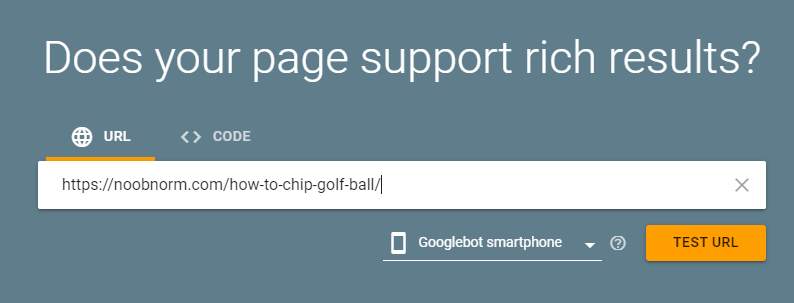
But this time, the tool volition focus on schema that'due south eligible for rich results.

Nosotros can meet warnings and errors.
Merely what's really absurd is we can also click "Preview Results" to see how our snippet could look on a Google results page.
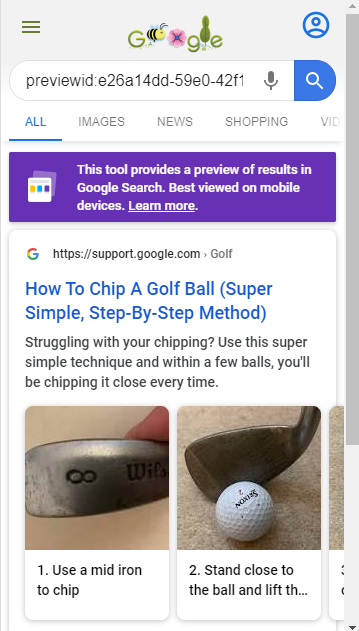
Pretty neat, right?
Bonus: check Google Search Panel for errors in existing schema
Google will as well report errors and warnings for existing structured data in Search Panel.
You'll find the reports under "Enhancements" on the left menu.
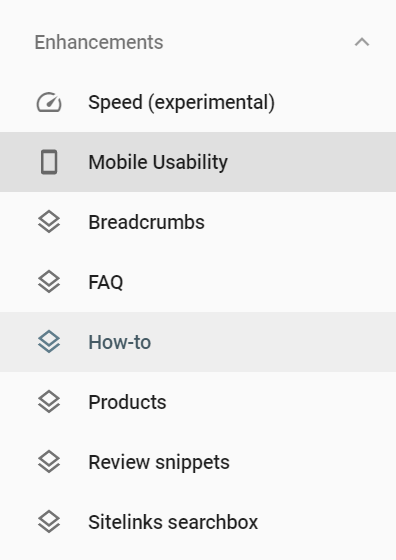
In this example nosotros can come across that Google has found several rich snippet formats, including FAQ, How-To, Products, and Reviews.
Clicking on one of the formats takes u.s.a. to the relevant report:
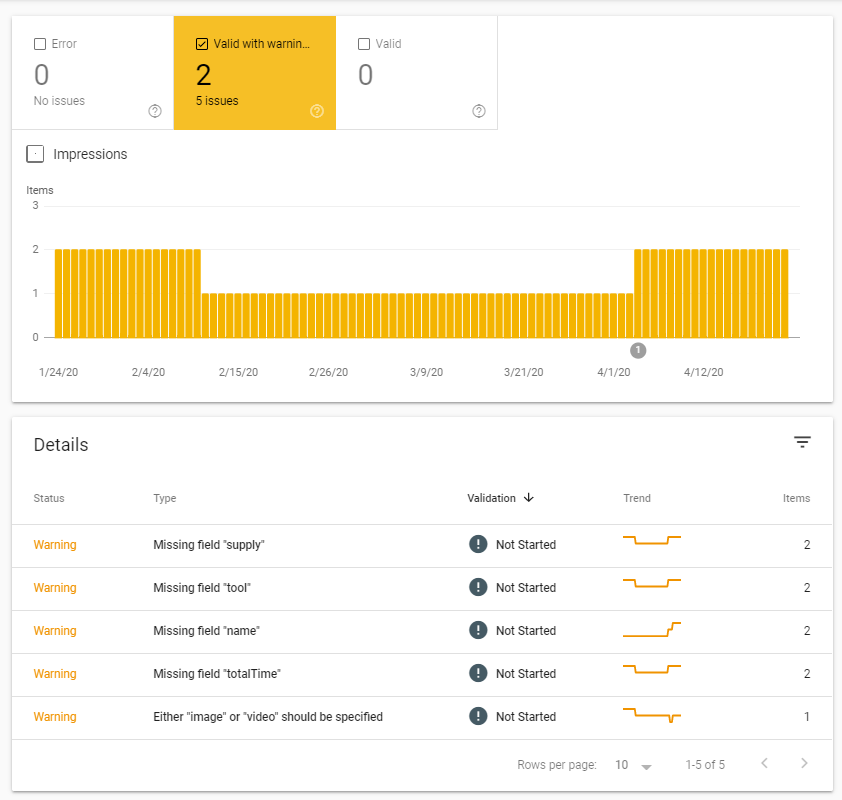
And gives u.s.a. a list of whatever errors and warnings for our markup.
Even better…
Google volition ship y'all an email any fourth dimension it discovers new errors in your schema.
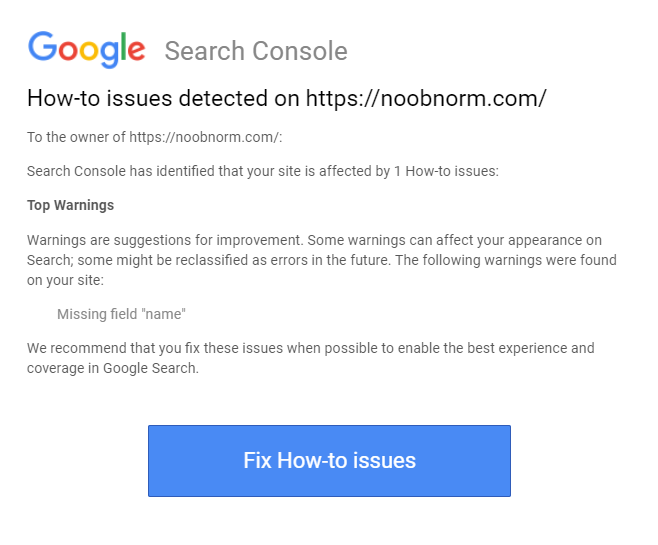
Then keep an eye on your inbox!
Testing the major Ecommerce providers
Running an Ecommerce business?
(No? Click hither if yous want to skip the eCommerce part)
Yes? I'thousand sure y'all'd rather focus on helping your customers and growing your sales than tweaking HTML and javascript.
So I decided to test some of the major Ecommerce platforms to find out how well they supported product rich snippets.
First, the good news:
I ready demo stores on 4 of the largest Ecommerce platforms — shopify, bigcommerce, Wix, Woocommerce. I also tested an online demo of Magento.

All 5 platforms were eligible for Ecommerce rich snippets correct out the box.
Prissy!
But allow's be picky…
Because in an ideal world, we want our Ecommerce rich snippet to look like this:

That'southward a review rating, cost, and stock status. All the shiny things that volition draw a searcher's attending.
WooCommerce, Large Commerce, and Magento give us the full set with a default installation.
Here's the mobile snippet from my demo WooCommerce shop:
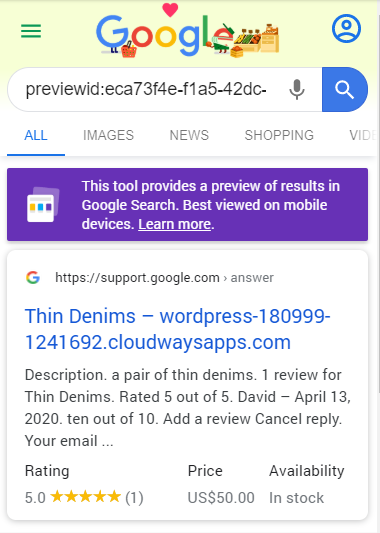
For Shopify you'll go pricing and stock condition. But for the review snippet you'll need to install a product reviews app (various costless + paid bachelor).
Ditto for Wix.
Merely similar I said, that's being picky. Installing an app is no big deal.
And it's fair to say that all five Ecommerce platforms tested were well ready up for rich snippets.
Then we don't need to worry, right?
Well, not quite.
Because I used the phrase "out the box" for a reason…
Always exam your snippets when yous install a new theme
Shopify: we're all ready for rich snippets!
Fancy new theme: hold my beer!
The default themes on the major Ecommerce platforms are by and large well coded and set up for rich snippets.
Simply once you've configured the nuts and added a few products what are y'all gonna' do?
You're gonna' ditch that ugly default theme and go hunting for a fancy new one!
And hither'south the thing:
While near theme developers volition pay attending to schema (and SEO optimization in general), some… well… they won't.
And then whenever you install a new theme on your site, run it through the rich results testing tool to make sure your product schema is nevertheless in place.
Considering sometimes… it won't exist.
Or if it is… it might accept errors.
Either way, you lot tin can kiss cheerio to your rich snippets.
Fortunately it's fixable. Here's how to do information technology in Shopify.
Fixing missing production schema in Shopify
Product schema completely missing from your new theme?
This one is easy.
In Shopify'southward default theme, the product schema is generated by this lawmaking in product.liquid:
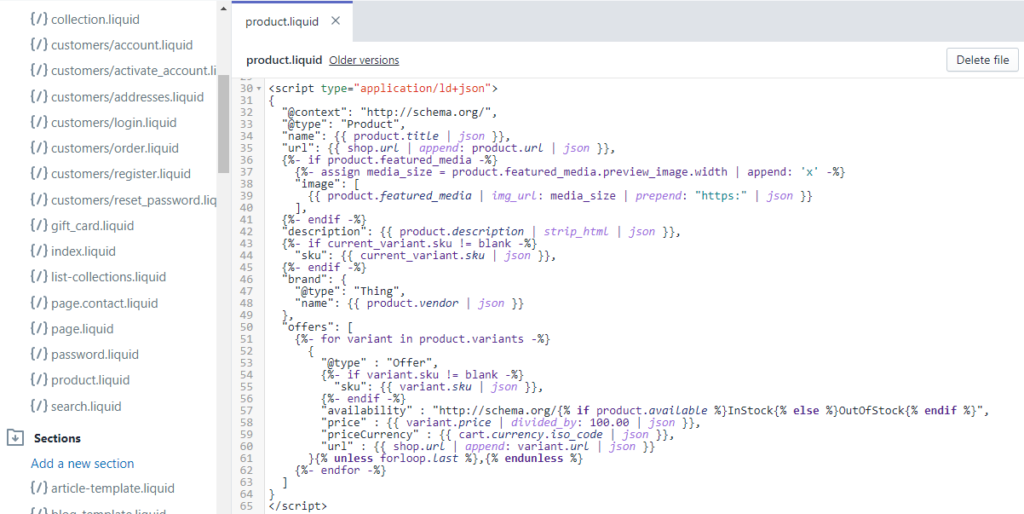
Just copy everything between <script type="application/ld+json"> and </script> and paste it into your new theme's product.liquid template.
Of import: don't overwrite anything else in that template. Paste the schema code underneath the existing code.
Fixing product schema errors in Shopify
If your production schema is returning errors you're going to have to go a little more forensic to figure out why.
The rich snippets preview tool will let you know what the errors are:
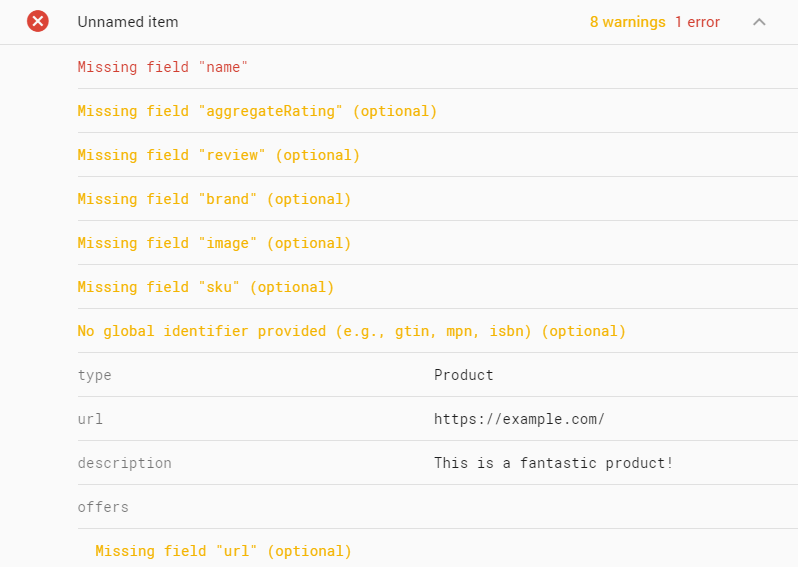
Simply you'll need to dig into your themes templates to find the offending code and set it.
Generally it's going to exist:
- in the product.liquid template if it's a JSON implementation
- in the product-template.liquid template (under sections) if it's a microdata implementation
Only I've come across some weird Shopify theme structures in the past, so that's non a guarantee…
Be careful as this is easier to suspension than a direct copy and paste.
And ask your theme developer for help if y'all're not 100% confident in altering code. It's a bug later on all, and something they should fix!
Case written report (How-to rich snippets)
Google introduced how-to rich snippets in 2019.
And they're probably the shiniest of all shiny SERP features. They look like this…
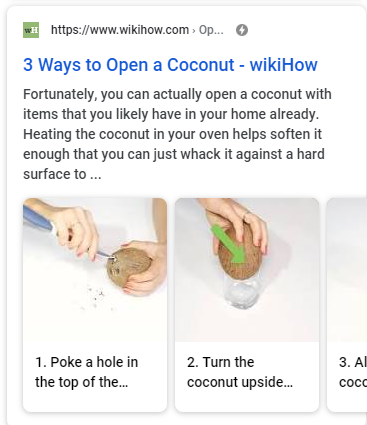
And this…
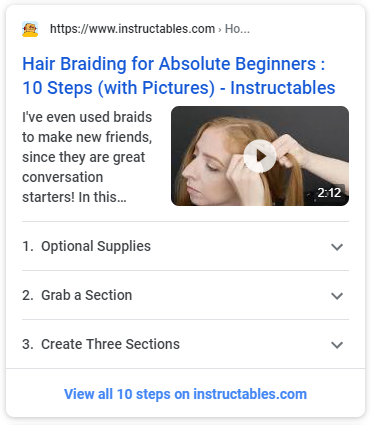
That's some serious SERP real estate!
Only when I analyzed 100 "how to" keywords in April 2020 I fabricated 2 interesting discoveries:
- They're not widely used (opportunity)
- Google won't always prove them (bummer)
It seemed there was a huge opportunity for sites targeting how-to keywords to boost their SERP visibility.
So 1 year down the line (give or have), I decided to re-exam the same keywords, and see if there had been whatsoever change in:
- the adoption of HowTo schema
- the prevalence of How-to rich snippets in search
Here's what I discovered.
The keywords
I randomly selected 100 "how-to" keywords, with a mixture of search volumes and difficulties.
Examples include:
- "how to accost a letter" (49,000 monthly searches)
- "how to mail on instagram" (27,000 monthly searches)
- "How to cut roses" (500 monthly searches)
Across the 100 keywords, there were a total of 793 individual pages ranking on page 1 of the SERPs.
The same set of keywords was used in April 2020 and Feb 2021.
The headlines
i. Adoption of HowTo schema markup remains remarkably low
- In 2020, just xviii.viii% of kickoff page results included HowTo schema
- Just in 2021, the number of pages with HowTo schema actually dropped slightly to 18.2%
2. Prevalence of HowTo rich snippets in the SERPs has nosedived (kind of…)
- In 2020, effectually 80% of pages with HowTo schema correctly implemented were rewarded with the How-to rich snippet
- Only in 2021, merely 26% of eligible pages got the snippet (see #3)
3. wikiHow have currently lost ALL their How-to snippets
The headline figure of 26% of eligible pages getting the snippet is incredibly low, and a large drop from 2020. But information technology's somewhat distorted by wikiHow, who at the time of the recent report had lost all of their HowTo snippets.
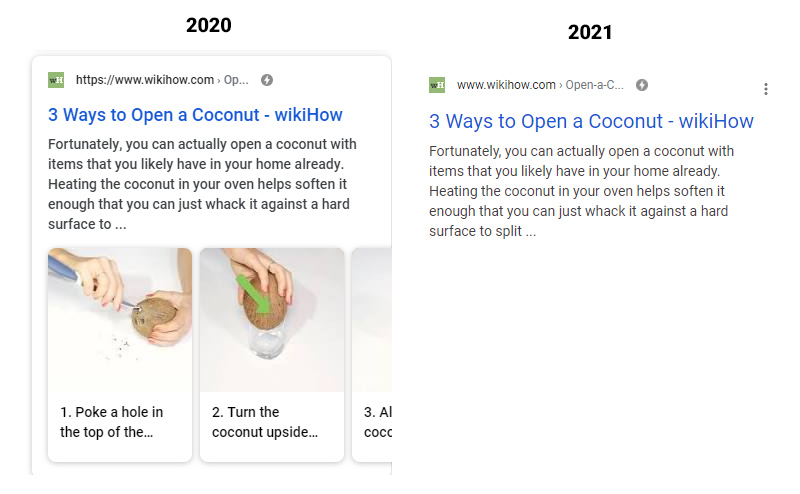
WikiHow currently rank on page one for effectually 80% of the how-to keywords we looked at. In fact, over 54% of all individual pages with HowTo schema in place are from wikiHow.
So if they were to get their How-to snippets back, prevalence (i.e. the number of eligible pages getting the snippet) would jump dorsum upwardly to a similar level as it was in 2020 (above lxxx%).
four. When you get the mobile How-to snippet, you'll also become the desktop snippet (most all of the fourth dimension)
When starting time introduced, How-to snippets were just displayed on mobile. Just in May 2020, Google started showing them for desktop queries too.
The good news? Almost every page in our study which had a mobile How-to snippet as well had the desktop snippet. But there was one exception.
Family unit Handy Homo got the mobile HowTo snippet for the query "how to unclog a toilet"…

Only didn't get the desktop snippet.

I couldn't see whatsoever reason why this was the case. But if you spot annihilation, let me know in the comments!
Regardless, we can probably chalk this upward as an anomaly and say that in 2021 if you get the mobile How-to rich snippet, yous'll also get the desktop snippet.
Why does Google ignore some How-to rich snippets?
1. Is it based on search position?
Could it be the instance that Google only shows How-to rich snippets for pages ranking in a higher place a certain position on page ane?
Doesn't seem like information technology.
Plenty of pages ranking almost the bottom of the showtime page got the How-to snippet, while others college upwardly the folio missed out.
two. Are there a maximum number of How-to rich snippets on each search event?
Since the number of sites implementing HowTo schema is so low, it's difficult to brand a full assessment hither.
But for comparison:
In 2021, the maximum number of pages with HowTo schema implemented in an individual search was iii, and the most How-to snippets actually displayed on a search result was 2.
Concluding year I observed 3 How-to snippets displaying in some searches.
And then the maximum may take gone downwards, or in that location may be no maximum. Maxim otherwise would just exist guessing.
But what I will say is that at that place is a lot more than SERP existent estate taken up this year by other features.
Almost 83% of mobile searches had a "video wall of death"…
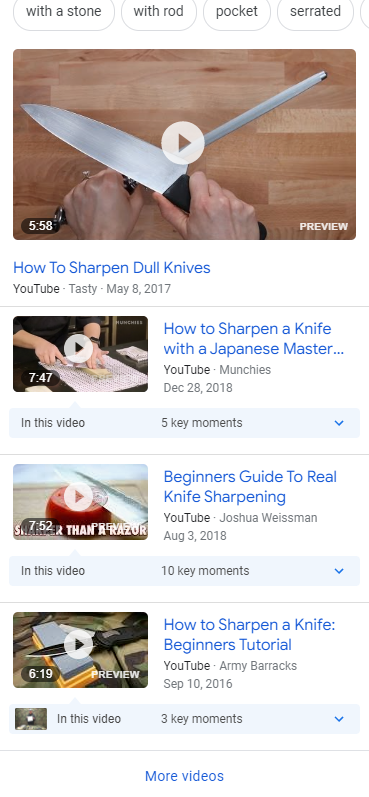
While around 45% had an "interesting finds" block…

38% of searches had both.
Does this requite less room for additional SERP features like How-to snippets? Mayhap.
3. Is it based on domain authorisation/trust?
Last yr I postulated that domain authority (or trust) might be a big factor in deciding whether Google shows How-to snippets for an individual site.
Information technology made sense. And was backed upwardly by the fact that large sites such as DA89 Ifixit got snippets for pretty much every page where they added the relevant schema.
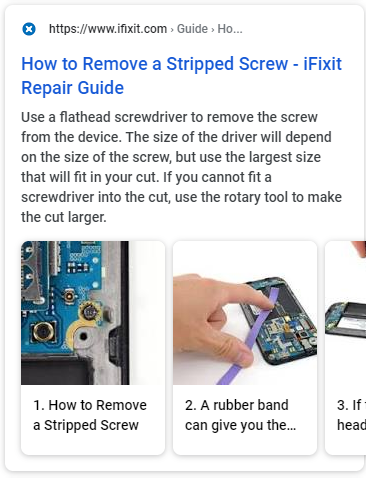
In fact, there wasn't a single site below DA70 that managed to grab a How-to snippet.
To further test the theory, I added How-to schema to a mid potency site…
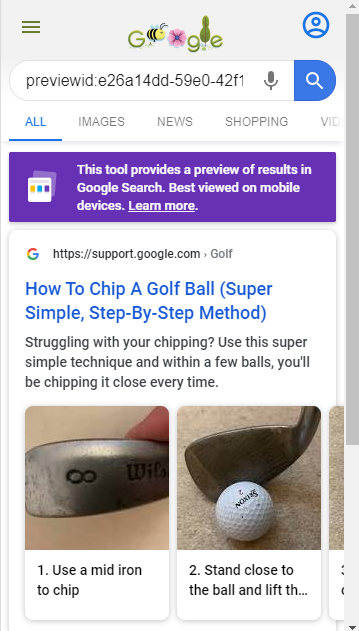
Did Google brandish the How-to rich snippet? Nope.
And then domain authority as a factor in deciding which sites become the snippet seemed a reasonable assumption.
But that theory has been somewhat diddled out the h2o by wikiHow losing their snippets.
Their traffic has dipped a chip in the concluding year…
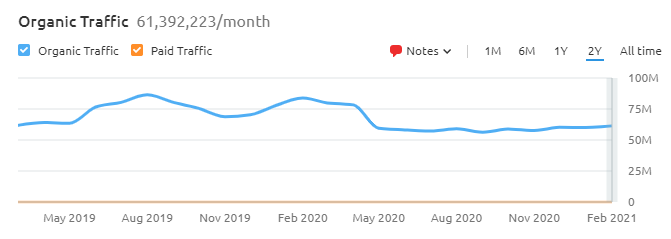
…but it's safe to say they are even so a highly trusted site, getting tens of millions of organic visits every month.
Then there's definitely something other than domain authority in the mix.
four. Is information technology based on user behavior?
Terminal year I revealed how Stylecraze — a DA88 site with millions of monthly search visits — had lost their How-to snippets.
This was interesting, as Stylecraze had previously been the subject of a instance study on the Google Developers blog.
But guess what? At to the lowest degree for some queries, their snippets are now back.
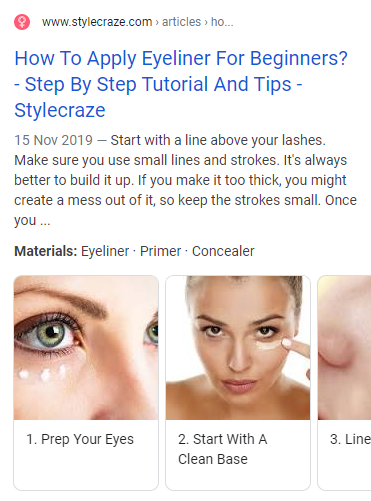
While wikiHow has been wiped off the map.
This suggests 3 things:
- If you lose How-to snippets they tin come back
- If y'all have How-to snippets yous can lose them
- Google may exist using user behavior signals (and A/B testing) to figure out which site's snippets give the best experience for searchers
Since Google is e'er testing and optimizing SERP layouts, point 3 doesn't experience like too much of a stretch.
Regardless, optimizing your snippets for CTR, and taking care of your users when they're on your site (reducing bounce, increasing time on site) is definitely something you should be focusing on in 2021.
Should you implement HowTo schema?
If you lot have how-to guides on your site, and then the answer is an emphatic…
Aye.
At the very least you should test HowTo schema on one or two of your most popular pages.
Because if Google does display a HowTo rich snippet for your site, the benefits are HUGE.
According to Stylecraze's SEO Manager Ravi Datti, when they first implemented HowTo schema they saw a 111% uptick in CTR to their pinnacle page.
That's some SERIOUS extra traffic.
And past rolling out on 1 or 2 peak pages but, the worst you'll lose is a few hours of time.
Getting the about out of rich snippets
Tying in with the advice above, if you lot're planning to test rich snippets (HowTo or otherwise) for a small number of pages to start, and then y'all'll want to get the most blindside for your buck.
While information technology'south certainly possible to get a rich snippet for a page that's not currently ranking on page one, the page isn't going to accept huge visibility.
As the saying goes:
"the best place to coffin a torso is folio ii of a Google search"
So for testing information technology's all-time to stick to pages already ranking on the first page.
If y'all're using our keyword ranking monitor (sign up for free here if not), it's easy to find out which keywords are already ranking in the top positions.
Merely run the report, guild past search volume (S.Five.) and filter it to "Top 10 rankings".
Seobility > Rankings > Order by Southward.Five. > Filter "Summit 10 Rankings"
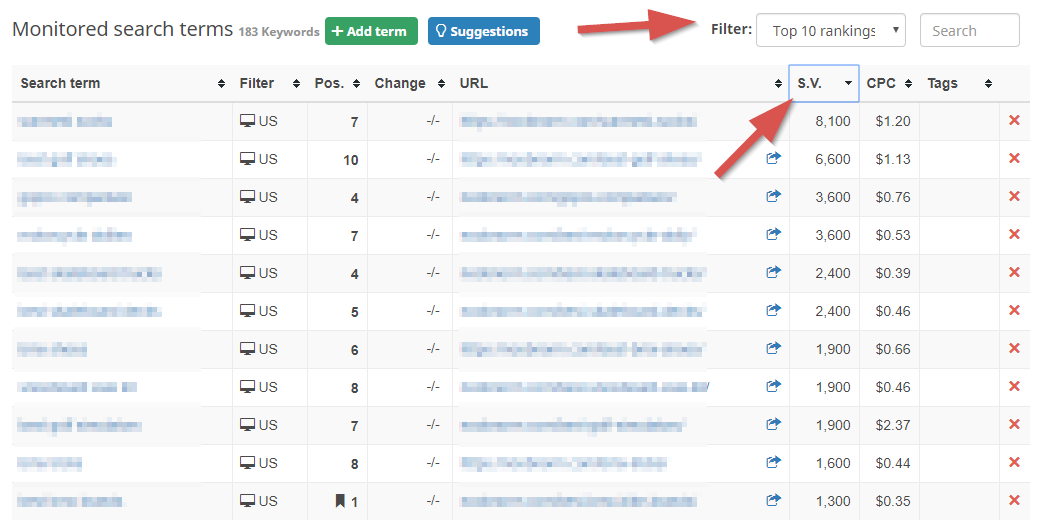
I would probably steer clear of anything ranking in position 1 (if it ain't broke, don't fix it!).
But any keyword ranking between positions 2 and 8 will exist a great one to examination.
If you successfully go the rich snippet, monitor affect on CTR in Google Search Console. You can run the "Performance" report, then click on an individual keyword to cheque its stats.
Google Search Console > Operation > Click Keyword > Select CTR
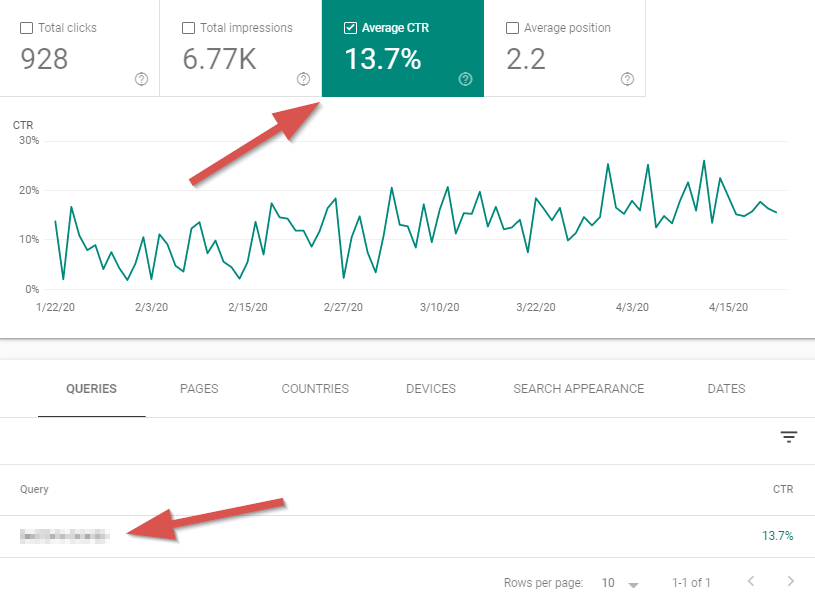
Hopefully yous'll see an upwardly trend!
Rich snippet spam
Google giveth, and Google taketh away.
HowTo snippets aside, many rich snippet formats are automatic. Y'all add together the code, you get the rich snippet.
Which means of course…
…they're open to abuse.
And Google doesn't like that i bit.
(us SEOs just can't have prissy things)
Terminal year they took action on what they chosen "self serving reviews".
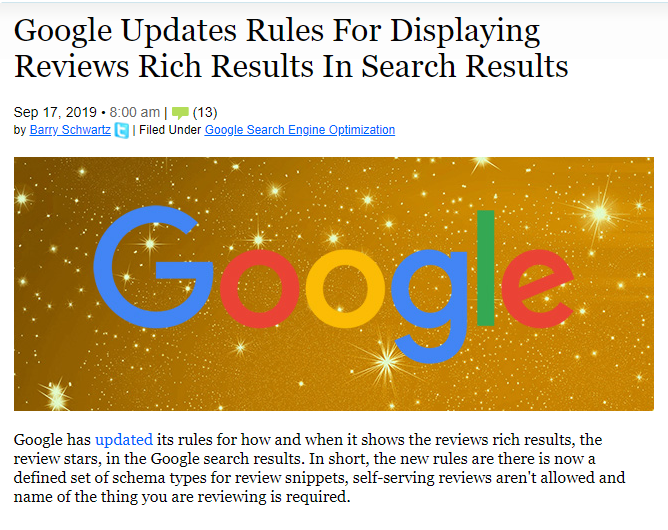
An action that was primarily aimed at local businesses.
Before the update, a local business could simply add review schema to their HTML (or embed a tertiary party widget) and they'd get 5 pretty little stars in their snippets:

Google decided that this was also easy to manipulate (being honest it was). And only like that, they took them away.
The lesson?
Cull the schema format that is correct for your page, not the schema you think looks prettiest in a rich snippet.
Because otherwise, they'll either shut you down.
Or they'll close everyone downwardly.
Which is Not absurd.
Rich snippet FAQs
There's a lot of information to have in here.
Then permit'south summarize.
And since this is a guide to rich snippets…
…let's do that in the course of an FAQ section.
(and yes, we added FAQ schema to this guide)
What are rich snippets?
Rich snippets are enhanced search results which provide additional information to searchers on the contents of a page. Google and other search engines use structured data, contained inside the HTML of a webpage, to grade these snippets.
What's the do good of rich snippets?
Rich snippets increase a pages visibility in search results and can atomic number 82 to a higher click-through rate (CTR).
Practise rich snippets impact SEO?
Yeah. The inclusion of schema markup does not directly impact on rankings, however, improved CTR may improve a page'due south rankings over fourth dimension. Rich snippets could therefore be classed as an indirect ranking gene. Additionally, search engine "optimization" is not but rankings, it also includes maximizing visibility in search and optimizing clicks.
How does a page qualify for rich snippets?
To be eligible for rich snippets a webpage should include structured data in the form of schema. Schema markup can be added via microdata, or JSON-LD.
Which rich snippet format should you lot choose?
The blazon of rich snippet which volition be right for your page will depend on the product, or service offered. Popular schema formats include "Product" schema for Ecommerce sites, "Review" schema for review sites, and "HowTo" schema for content sites.
Do Ecommerce systems include product schema "out the box"?
Near major Ecommerce systems include product schema by default. However, third political party themes and plugins may cause errors, or in some cases remove production schema entirely. Any changes to default configurations should therefore exist tested with either Google'south structured information testing tool, or Rich Snippet Preview tool.
Will Google ever prove rich snippets?
Fifty-fifty when the right schema is in place, Google will not always testify rich snippets in search. Google may be using user signals or other indicators to determine when to testify rich snippets.
Over to you lot!
That'southward it for our guide to rich snippets.
If you take whatever questions and then please get out a comment below.
And stick effectually, we've got more SEO content merely similar this coming soon!
PS: Get blog updates directly to your inbox!
aguirrethavizings.blogspot.com
Source: https://www.seobility.net/en/blog/rich-snippets/
0 Response to "Can I Just Report a Rich Snippet of Total Reviews to Google"
ارسال یک نظر